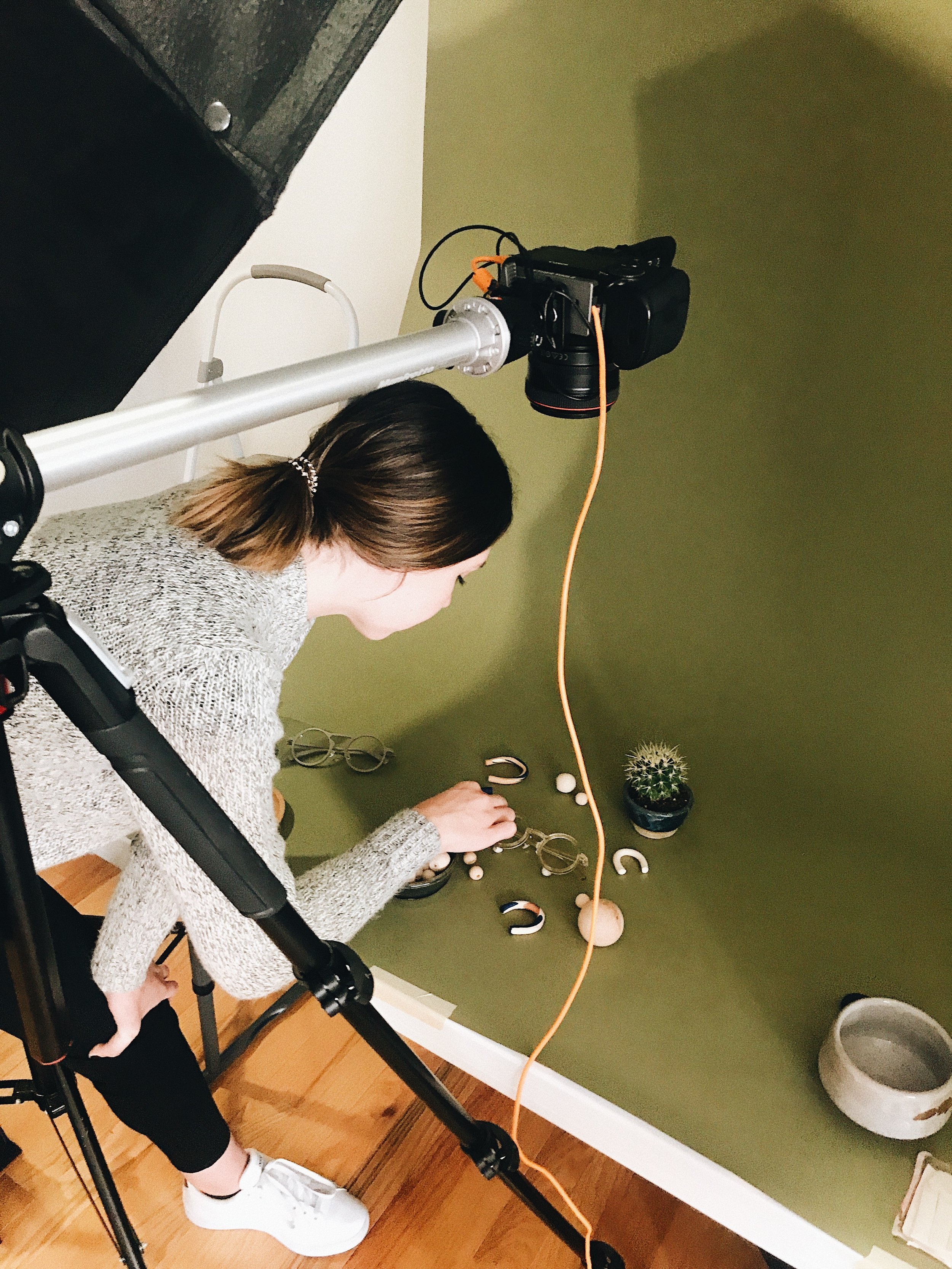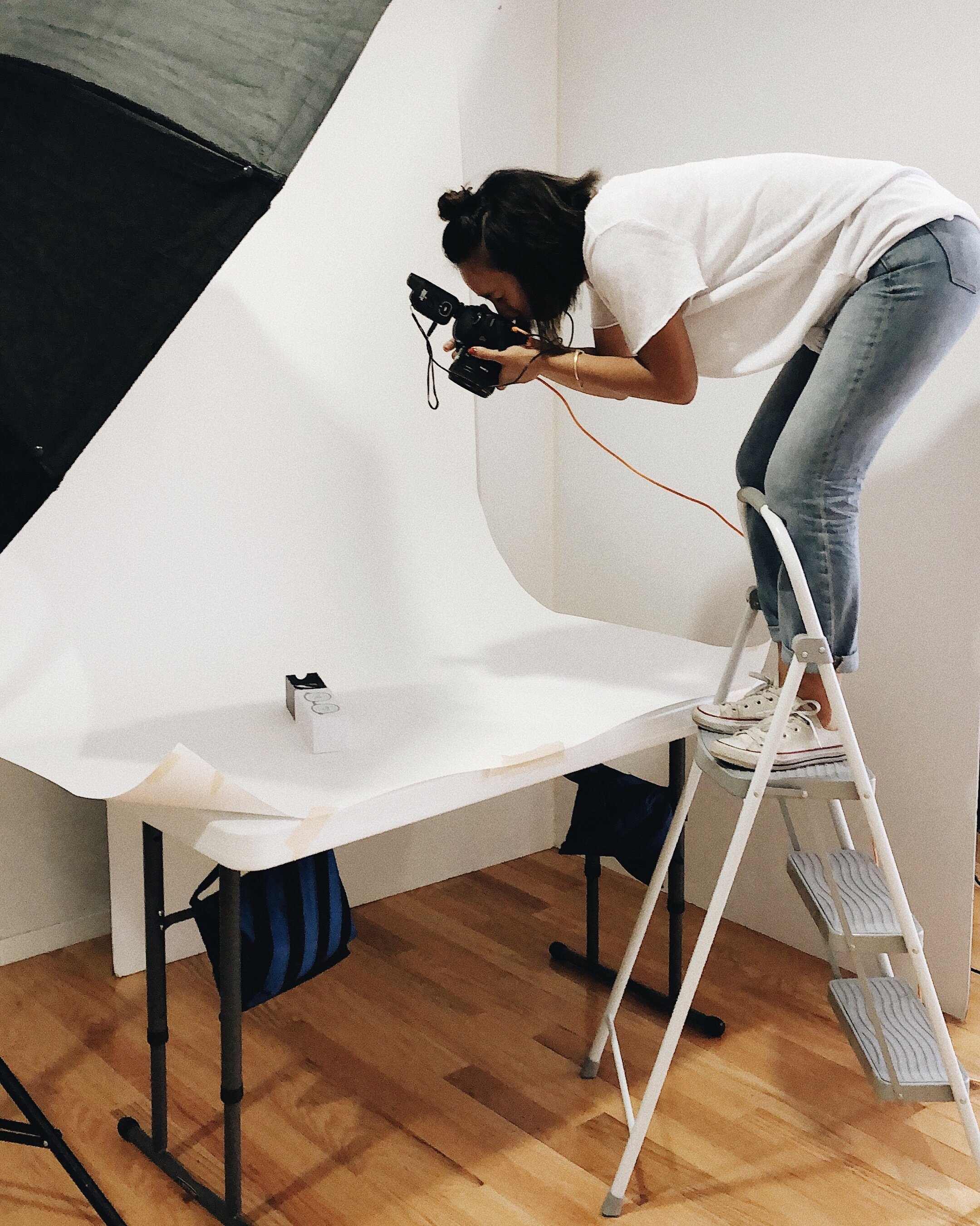Pitching to Dream Clients Part 3: Following Up
This is the third and final part in a three part series on how to grow your business by pitching yourself to your ideal clients. You can read part one here and part two here.
We’re passionate about pitching to clients because we found our first client by sending an email, which you can read about here, and we found many of our other early clients by going to craft fairs which you can read about here. We think it’s really important to pursue the clients that you want instead of waiting for them to come to you.
In part two I shared how I find potential clients and their contact information. I also talked about how I word the initial e-mail. Now I want to address one of the most important parts of pitching - following up. Honestly this can sometimes be more intimidating than the initial reaching out in terms of fearing rejection.
I can convince myself that if someone didn’t respond to my original e-mail, they don’t want to hear from me again, which may be true. But how many times do you get a message that you mean to respond to but it just simply gets lost in the shuffle? This happens to me ALL the time. I really appreciate follow-ups and reminders from people who reach out to us because it shows that they are actually interested.
This is what I try to remind myself when I follow up, if they are annoyed and want me to stop e-mailing, all they have to do is respond and say they are not interested. Until that happens, I should feel free to follow up within reason. There have been many occasions where I didn’t receive a response from a company until I reached out several times and if I had given up, those conversations may have never happened.
There is some debate in the sales world about how many “touch points” it takes to turn a lead into a customer, but it is usually around 6-8. This means that you should not get discouraged if it takes several follow ups before you hear back. I generally try to reach out 3-4 times within a short period of time, and then a few more times over the next few months.
I mentioned in part two that I have different lists for clients I have contacted and clients that I want to contact in the future. Within the contacted list, I have different sections for responses. This is the best way that I have found to easily keep track of everything.
The schedule of following up will depend on if you get a response or not, but this is generally how I space it out.
Send initial e-mail, move them to the “contacted” list
Follow Up 5 days later
Follow Up 8 days later (13 days after the original email)
Follow Up 2 weeks later
Follow Up 1 month later
Follow up 3 months later
Move them to a section called “Reach Out in Future” in the “Contacted” list
These dates will change if the company replies so I usually put all of these follow ups as subtasks in Asana, but I don’t assign a date to the next task until I check one off. If I do get a response, then the timeline changes based on what they say. If there is interest then I’ll follow up a week after they respond and then every couple weeks after that. Sometimes they will say they are interested in the future and so I will move them to the “Reach Out in Future” list and put a subtask to remind me to contact them again in a few months.
If I never receive a response, I move them to a section called “No Response.” If they respond and are not interested, I move them to the “Not Interested” section. I don’t want to delete them completely because this way I can always search to see if I have contacted them in the past. Since I reach out to so many brands, it can be hard to remember who I have already contacted. I can also go through the potentials who never responded once a year to try again or see if I can find a different e-mail address to contact.
When writing a follow up e-mail, make sure that you reference the original e-mail that was sent, but write a new e-mail with fresh wording each time. It doesn’t have to include everything from the first e-mail, just enough to remind them of who you are and that you are still interested in working with them.
I sometimes try to reach out to the company through a direct message on Instagram if I’m not getting a response. I don’t like to start with this since it feels less professional, but it sometimes works if you’re striking out with e-mails. I usually include the e-mail address I’ve been using in the message and ask if there is a better person for me to contact.
The key to gaining new clients is persistence and consistency. Most likely the companies you are reaching out to have no idea who you are, so you need to prove to them that you have something to offer and that you really care about working with them.
It often can take 6-8 months from our original e-mail before we book a shoot, even if the client reached out to us originally or responded right away. Growing your client list is not an overnight process, it takes a lot of hard work and willingness to put yourself out there. Eventually it will be worth it, just keep at it and don’t give up if you aren’t getting responses. There will be companies out there who will want to work with you, it just may take time to find the right match.
Read Part 1: Who Are They? here, and Part 2: Finding Clients and Reaching out here.
Is it the weekend yet?
Elle






